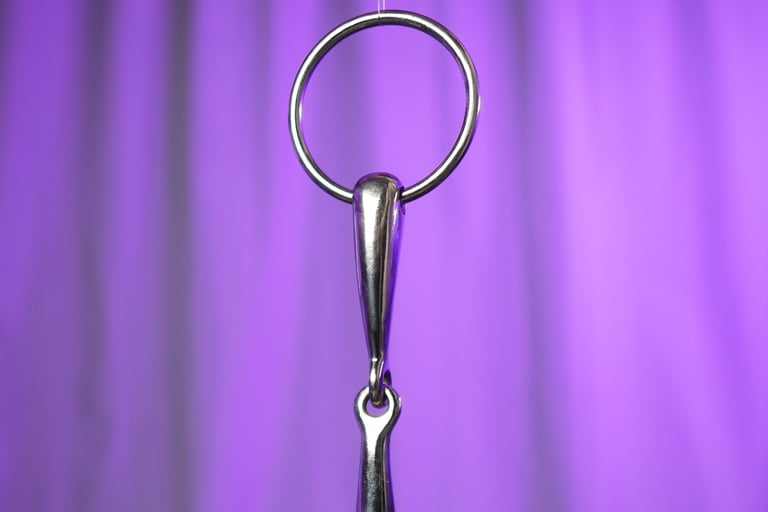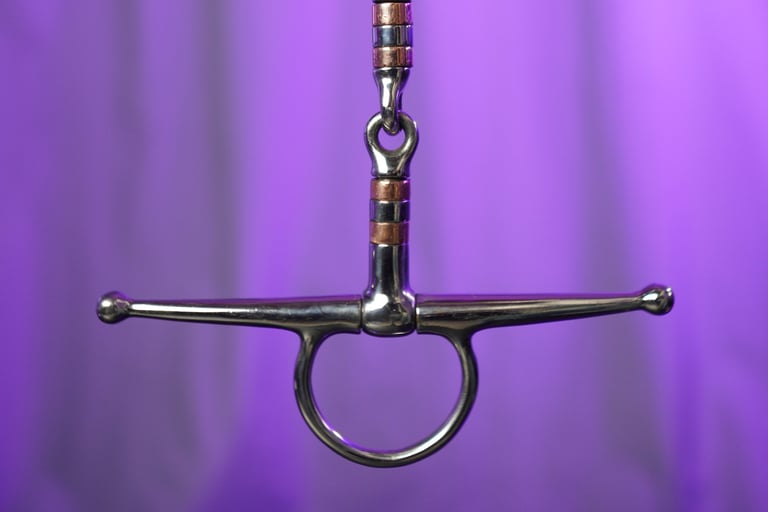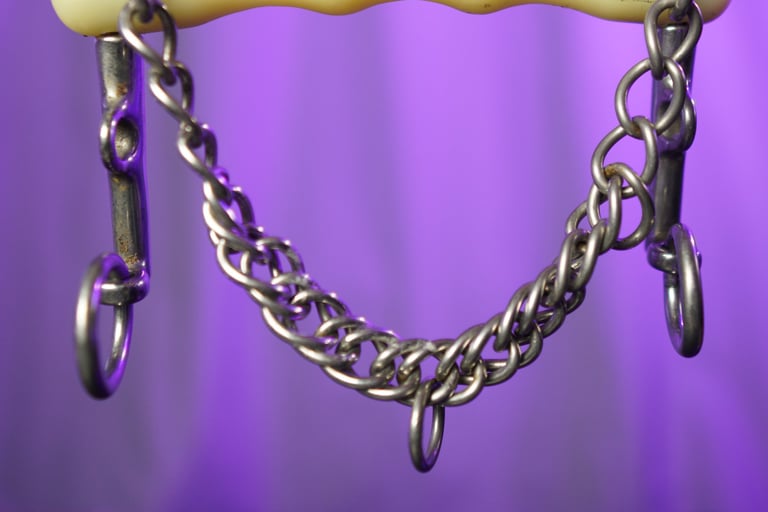All About Bits – Part I: Choosing the Material
PROFESIONAL EDUCATIONAL ARTICLES
In the first part about bits, I will focus on the material from which the bit is made. This has a much greater influence on the horse's acceptance of the bit than it might seem at first glance.
If you look around, you will notice that every horse and rider has a different type of bit. Today, there is a vast array of bits available on the market, offering increasingly innovative models. Bits differ not only in shape but also in their effects on the horse, which are determined by the chemical composition of the material from which they are made. Each material has a particular taste due to its chemical composition, which fundamentally affects the horse's acceptance of the bit. Often, the shape of the bit may be perfect for your horse, but the material could be problematic. This can affect the horse's acceptance of the bit, which may have little to do with its shape but rather its material.
To better navigate the wide range of materials used today in bit manufacturing and to help you choose the right bit for your horse, we will provide an overview of the properties of the most commonly used materials.
Stainless steel is most commonly used for making bits. It is often found in bits designed for modern sports disciplines of English riding, such as dressage, jumping, and eventing. This material is chosen by many professional and recreational riders. Its great advantage is the stability of its silver color and aesthetic appearance, requiring no maintenance. From a practical standpoint, stainless steel is very hard and resistant to damage from the horse's teeth. Manufacturers offer various types, such as lightweight and hollow models or, conversely, solid and heavier bits, depending on the rider's preference. However, it is important to mention their drawback as well. Due to its chemical stability, stainless steel—while being tasteless and odorless, which gives the bit hypoallergenic properties in practice—does not encourage the horse to salivate. This can lead to a so-called "dead" mouth, where the rider constantly struggles to create responsiveness through rein aids.
Another very popular option is copper-containing bits, often called “sweet bits” due to their golden color. Copper promotes salivation, which can improve the contact between the horse and the rider’s hand. This material has advantages over stainless steel in this regard, but it is important to consider the individual reaction of the horse. Some horses may not like the taste of copper, which can be seen by excessive salivation or a restless mouth at the mere touch of the bit, even before the rider takes the reins in hand.
Brass bits, which combine copper and zinc, are another option. The zinc content affects the resulting color of the bit, which can range from light gold to grayish gold. Different manufacturers use varying metal ratios and may add other ingredients that affect the taste and color of the bit. Some brass bits are chrome-plated, giving them a silvery appearance, which also alters their taste for the horse. Popular materials today include Aurigan (an alloy of copper, silicon, and zinc) or Sensogan (a mixture of copper, manganese, and zinc).
Recently, bits made from various types of plastic, rubber, and similar materials have gained popularity, often in combination with stainless steel to provide strength. However, these materials can also cause dry mouth, similar to stainless steel, and are therefore often seasoned. Another downside is that these materials may have shape instability and softness. On the other hand, some riders prefer these properties and choose bits made from these materials for their horses.
Lastly, iron bits, once the most common material, remain popular among traditional working riders, especially in Spain and western riding. These bits are less visually appealing because they naturally oxidize and rust, and as a result, they do not offer the innovative shapes seen with stainless steel or other modern materials. Nonetheless, many horses prefer them over other materials.
Lastly, iron bits, once the most common material, remain popular among traditional working riders, especially in Spain and western riding. These bits are less visually appealing because they naturally oxidize and rust, and as a result, they do not offer the innovative shapes seen with stainless steel or other modern materials. Nonetheless, many horses prefer them over other materials.
Today, there is a vast selection of bits made from various materials available on the market. Therefore, it is important to understand their properties, as the material the bit is made from plays a crucial role in the horse's acceptance of it. Keep in mind that even if the shape of the bit is suitable for your horse, the issue may lie in the material, which may not be ideal. The choice of bit material is entirely up to you as the rider, and sometimes it may take trying different options to find the ideal material for your horse.
In the next part, we will discuss the shape of bits and their different effects on the horse.
STAINLESS STEEL
COMBINATION OF STAINLESS STEEL + FLAVOR-ACTIVE ALLOY
PLASTIC






